Street performance

Street performance or busking is the act of performing in public places for gratuities. In many countries the rewards are generally in the form of money but other gratuities such as food, drink or gifts may be given. Street performance is practiced all over the world by men, women and children and dates back to antiquity. People engaging in this practice are called street performers or buskers.
Performances are anything that people find entertaining. Performers may do acrobatics, animal tricks, balloon twisting, caricatures, clowning, comedy, contortions, escapology, dance, singing, fire skills, flea circus, fortune-telling, juggling, magic, mime, living statue, musical performance, puppeteering, snake charming, storytelling or reciting poetry or prose, street art such as sketching and painting, street theatre, sword swallowing, and ventriloquism.
Etymology
The term busking was first noted in the English language around the middle 1860s in Great Britain. The verb to busk, from the word busker, comes from the Spanish root word buscar, with the meaning "to seek".[1] The Spanish word buscar in turn evolved from the Indo-European word *bhudh-skō ("to win, conquer").[2] It was used for many street acts, and title of a famous Spanish book about one of them, El buscón. Today, the word is still used in Spanish but mostly relegated for female street sex workers, or women seeking to be set up as private mistress of married men.
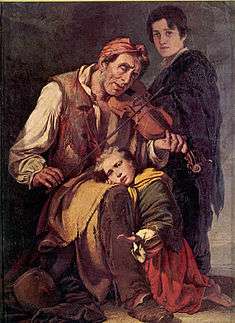

History
There have been performances in public places for gratuities in every major culture in the world, dating back to antiquity. For many musicians street performance was the most common means of employment before the advent of recording and personal electronics.[3] Prior to that, a person had to produce any music or entertainment, save for a few mechanical devices such as the barrel organ, the music box, and the piano roll. Organ grinders were commonly found busking in the old days.
Busking is common among some Romani people, who are called "gypsies", a description that is no longer socially acceptable in some societies. Romantic mention of Romani music, dancers and fortune tellers are found in all forms of song poetry, prose and lore. The Roma brought the word busking to England by way of their travels along the Mediterranean coast to Spain and the Atlantic ocean and then up north to England and the rest of Europe.
In medieval France buskers were known by the terms troubadours and jongleurs. In northern France they were known as trouveres. In old German buskers were known as Minnesingers and Spielleute. In obsolete French it evolved to busquer for "seek, prowl" and was generally used to describe prostitutes. In Russia buskers are called skomorokh and their first recorded history appears around the 11th century.
Mariachis, Mexican bands that play a style of music by the same name, frequently busk when they perform while traveling through streets and plazas, as well as in restaurants and bars.[4]
Around the mid-19th century Japanese Chindonya started to be seen using their skills for advertising, and these street performers are still occasionally seen in Japan. Another Japanese street performance form dating from the Edo period is Nankin Tamasudare, in which the performer creates large figures using a bamboo mat.
In the United States, medicine shows proliferated in the 19th century. They were traveling vendors selling elixirs and potions to improve the health. They would often employ entertainment acts as a way of making the clients feel better. The people would often associate this feeling of well-being with the products sold. After these performances they would "pass the hat".
"We like playing for big crowds, and the goal all along has been for people to pay a little to come and see us. But it all started on street corners, and that is still very connected to what we do. It's such a validating musical experience. Busking is a very humble and brave act that takes courage to do well. It's also about the energy of music being alive outside in a city . . You can walk right by it right in front of you. Sure, to some people you're just another guy with his hand out, so sometimes busking can be great social barometer. You're able to gauge who you live with on earth."[5]
Ketch Secor, Old Crow Medicine Show
One man bands have historically performed as buskers playing a variety of instruments simultaneously. One man bands proliferated in urban areas in the 19th and early 20th centuries and still perform to this day. A current one man band plays all their instruments acoustically usually combining a guitar, a harmonica, a drum and a tambourine. They may also include singing. Many still busk but some are booked to play at festivals and other events.
Folk music has always been an important part of the busking scene. Cafe, restaurant, bar and pub busking is a mainstay of this art form. Two of the more famous folk singers are Woody Guthrie and Joan Baez. The delta bluesmen were mostly itinerant musicians emanating from the Mississippi Delta region of the USA around the early 1940s and on. B.B. King is one famous example who came from these roots.
The counterculture of the hippies of the 1960s occasionally staged "be-ins", which resembled some present-day busker festivals. Bands and performers would gather at public places and perform for free, passing the hat to make money. The San Francisco Bay Area was at the epicenter of this movement – be-ins were staged at Golden Gate Park and San Jose's Bee Stadium and other venues. Some of the bands that performed in this manner were Janis Joplin with Big Brother and the Holding Company, the Grateful Dead, Jefferson Airplane, Quicksilver Messenger Service, Country Joe and the Fish, Moby Grape and Jimi Hendrix.
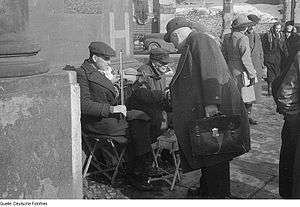

Christmas caroling can also be a form of busking, as wassailing included singing for alms, wassail or some other form of refreshment such as figgy pudding. In Ireland the traditional Wren Boys and in England Morris Dancing can be considered part of the busking tradition.
In India and Pakistan's Gujarati region Bhavai is a form of street art where there are plays enacted in the village, the barot or the village singer also is part of the local entertainment scene.
In the 2000s, some performers have begun "Cyber Busking". Artists post work or performances on the Internet for people to download or "stream" and if people like it they make a donation using PayPal.
Forms
There are four basic forms of street performance
"Circle shows" are shows that tend to gather a crowd around them. They usually have a distinct beginning and end. Usually these are done in conjunction with street theater, puppeteering, magicians, comedians, acrobats, jugglers and sometimes musicians. Circle shows can be the most lucrative. Some time the crowds attracted can be huge. A good busker will control the crowd so the patrons do not obstruct foot traffic.
"Walk-by acts" are typically where the busker performs a musical, living statue or other act that does not have a distinct beginning or end and the public usually watch for a brief time. A walk by act may turn into a circle show if the act is unusual or very popular.
"Stoplight performers" present their act right on the crosswalk. while the lights are red. Then, while still red, they walk by the cars to get contributions from drivers and/or passengers. A variety of disciplines can be used in such format (Juggling, BreakDance, even magic tricks). Artists have a very brief/condensed routine. This form is seen more commonly in Central and South America.
"Café busking" is done mostly in restaurants, pubs, bars and cafes. These venues are popular for busking musicians. Joni Mitchell, Bob Dylan and Joan Baez all used this type of venue early in their careers. Making a living using the piano bar principle (i.e. for tips) is performed using a range of genres, including jazz, rock, and even "light" classical style. Diverse artists like Jimmy Durante and Andrea Bocelli have used this type of performance to earn money. Perhaps one of the most famous of these is Billy Joel, who rose to fame from working in piano bars. His hit song "Piano Man" was written about a six-month stint he did in 1972 at the "Executive Room" piano bar in Los Angeles.
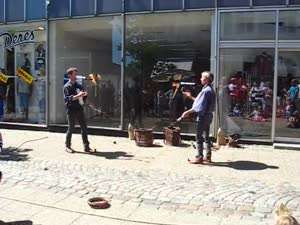
Collecting money
Buskers collect donations and tips from the public in a variety of containers and by different methods depending on the type of busking they are performing. For walk by acts their instrument case or a special can or box is often used. For circle shows the performer will typically collect money at the end of the show, although some performers will also collect during the show to ensure all audience members have had a chance to show appreciation for their skills. Sometimes a performer will employ a bottler, hat man, or pitch man to collect money from the audience. The term bottler is a British term which originated following the use of the top half of a bottle to collect money. The bottle had a leather flap inserted in the bottle neck and a leather pouch attached. This design allowed coins to be put in the bottle but not allow them to be removed easily without the coins jingling against the glass. The first use of such contrivances was recorded by the famous Punch and Judy troupe of puppeteers in early Victorian times.[6] Bottling itself can be an art form, and the difference between a good and a bad bottler can be crucial to the amount of money earned on a pitch. A good bottler is able to encourage audience members to give money. A bottler usually gets a cut of the money made on the pitch. Prior to the 20th century, it was common for buskers to use a trained monkey as a bottler. That practice has diminished or ceased in many countries due to changes in social attitudes and animal control laws. However some modern buskers use a device known as monkey stick which is a long stick with bottle caps or small cymbals attached to make a noise before a show or prior to making a collection.
Pitches
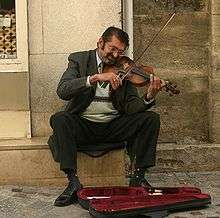

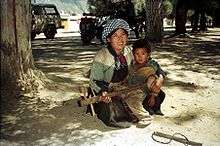
.jpg)
The place where a performance occurs is called a "pitch". A good pitch can be the key to success as a busker. An act that might make money at one place and time may not work at all in another setting. Popular pitches tend to be public places with large volumes of pedestrian traffic, high visibility, low background noise and as few elements of interference as possible. Good locations may include tourist spots, popular parks, entertainment districts including lots of restaurants, cafes, bars and pubs and theaters, subways and bus stops, outside the entrances to large concerts and sporting events, almost any plaza or town square as well as zócalos in Latin America and piazzas in other regions. Other places include shopping malls, strip malls, and outside of supermarkets, although permission is usually required from management for these.
In her book, Underground Harmonies: Music and Politics in the Subways of New York, Susie J. Tanenbaum examined how the adage "Music hath charms to soothe the savage beast" plays out in regards to busking. Her sociological studies showed that in areas where buskers regularly perform, crime rates tended to go down, and that those with higher education attainment tended to have a more positive view of buskers than did those of lesser educational attainment.[7] Some cities encourage busking in particular areas,[8] giving preference to city government-approved buskers and even publishing schedules of performances.[9]
Many cities in the United States have particular areas known to be popular spots for buskers. Performers are found at many locations like Mallory Square in Key West, in New Orleans, in New York around Central Park, Washington Square, and the subway systems, in San Francisco, in Washington, D.C. around the transit centers, in Los Angeles around Venice Beach, the Santa Monica Third Street Promenade, and the Hollywood area, in Chicago on Maxwell Street, in the Delmar Loop district of St. Louis, and many other locations throughout the US. Busking is still quite common in Scotland, Ireland, and England with musicians and other street performers of varying talent levels.
Legislation
The first recorded instances of laws affecting buskers were in ancient Rome in 462 BC. The Law of the Twelve Tables made it a crime to sing about or make parodies of the government or its officials in public places; the penalty was death.[10][11] Louis the Pious "excluded histriones and scurrae, which included all entertainers without noble protection, from the privilege of justice".[12] In 1530 Henry VIII ordered the licensing of minstrels and players, fortune-tellers, pardoners and fencers, as well as beggars who could not work. If they did not obey they could be whipped on two consecutive days.[13]
In the United States under Constitutional Law and most European common law, the protection of artistic free speech extends to busking. In the U.S. and many countries, the designated places for free speech behavior are the public parks, streets, sidewalks, thoroughfares and town squares or plazas. Under certain circumstances even private property may be open to buskers, particularly if it is open to the general public and busking does not interfere with its function and management allows it or other forms of free speech behaviors or has a history of doing so.[14]
While there is no universal code of conduct for buskers, there are common law practices which buskers must conform to. Most jurisdictions have corresponding statutory law. In the UK busking regulation is not universal with most laws (if there are any) being governed local councils.[15] Some towns in the British Isles limit the licenses issued to bagpipers because of the volume and difficulty of the instrument. In Great Britain places requiring licenses for buskers may also require auditions of anyone applying for a busking license. Oxford City Council have decided to enact a Public Space Protection Order. Some venues that do not regulate busking may still ask performers to abide by voluntary rules. Some places require a special permit to use electronically amplified sound and may have limits on the volume of sound produced.[16] It is common law that buskers or others should not impede pedestrian traffic flow, block or otherwise obstruct entrances or exits, or do things that endanger the public. It is common law that any disturbing or noisy behaviors may not be conducted after certain hours in the night. These curfew limitations vary from jurisdiction to jurisdiction. It is common law that "performing blue" (i.e. using material that is sexually explicit or any vulgar or obscene remarks or gestures) is generally prohibited unless performing for an adults-only environment such as in a bar or pub.
In London, busking is prohibited in the entire borough of the City of London. The London Underground provides busking permits in tube stations. Most London boroughs do not license busking, but they have optional powers, under the London Local Authorities Act 2000, if there is sufficient reason to do so. Where these powers have not been adopted, Councils can rely on other legislation including the Environmental Protection Act 1990 to deal with noise nuisance from buskers and the Highways Act to deal with obstructions. Camden Council is currently looking into further options to control the problem of nuisance buskers and the playing of amplified music to the detriment of local residents and businesses.[17]
Buskers may find themselves targeted by thieves due to the very open and public nature of their craft. Buskers may have their earnings, instruments or props stolen. One particular technique that thieves use against buskers is to pretend to make a donation while actually taking money out instead, a practice known as "dipping" or "skimming". George Burns described his days as a youthful busker this way:[18]
Sometimes the customers threw something in the hats. Sometimes they took something out of the hats. Sometimes they took the hats.
Notable performers

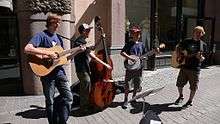

- Josephine Baker started street dancing to make money and was recruited for the St. Louis Chorus vaudeville show at the age of 15, which started her dancing career, which branched into singing, films and many others.
- Catfish the Bottleman a well known busker from Sydney, Australia, so inspired Van McCann of Catfish and the Bottlemen that he named his band after him. He watched him perform as a child and said that it was his first memory of music.[19]
- Tracy Chapman began her career busking in Harvard Square in Cambridge, Massachusetts.
- Mike Doughty, former singer for Soul Coughing, released Busking, which contains 12 tracks from a 2007 busking performance in the 14th Street subway station in New York City.[20]
- Newton Faulkner has been known to busk and video footage of him busking has been made available on YouTube, including a full acoustic cover of Queen's "Bohemian Rhapsody".
- Benjamin Franklin, the American inventor and statesman, was a street performer. He composed songs, poetry and prose about the current events and went out in public and performed them. He would then sell printed copies of them to the public. He was dissuaded from busking by his father who convinced him it was not worth the stigmas that some people attach to it. It was this experience that helped form his beliefs in free speech, which he wrote about in his journals.[3]
- G4, the British popera quartet, performed as buskers across London during their college days.[21][22]
- Shannon Hoon, former singer for Blind Melon, was known to busk all over the U.S.
- Colin Huggins, classical pianist, performs on a Grand Piano in Washington Square Park and other parks in Greenwich Village, New York City
- Guy Laliberté was a street performer when he founded the Cirque du Soleil theatrical company in 1984.[23]
- Loreena McKennitt, developing a passion for Celtic music, learned to play the Celtic harp and began busking at various places, including St. Lawrence Market in Toronto in order to earn money to record her first album.
- Edward McMichael was a celebrated street musician known as Seattle's "Tuba Man", who busked outside of the city's various sports and performing arts venues. In 2008, he was killed by attackers who were attempting to rob him.
- Sterling Magee and Adam Gussow, AKA Satan and Adam, were busking on 125th Street in Harlem, New York City, in the summer of 1987 when the members of U2, accompanied by a film crew, paused to watch the blues duo. The scene later appeared in the film Rattle and Hum.[24]
- George Michael used to busk near the London Underground, performing songs such as '39 by Queen.[25]
- Peter Mulvey, the singer-songwriter, recorded an entire album down in the Boston Subway, where he was a regular busker. In most cases, songs were recorded in one or two takes.[26]
- Kristyna Myles Myles won the BBC Radio 5 Live Busker of the Year competition in 2005 and has gone on to sign a recording contract with Decca. Her debut album is due for release in September 2012.
- Paul Oscher, a famous Blues musician and harp player, has busked as "Brooklyn Slim" on the Venice Boardwalk to try out new material. Oscher, a two time W.C Handy Award winner, was the harp player for Muddy Waters and his band in the latter 1960s and early 1970s. He currently performs at Blues festivals in the U.S. and internationally.
- Natalia Paruz who can be seen in movies such as Dummy and heard on many movie soundtracks has been playing the musical saw in the New York City subway since 1994.[27]
- Alice Tan Ridley, busked in New York City subway stations for 30 years; semi-finalist in America's Got Talent, mother of Gabourey Sidibe[28]
- Peg Leg Sam, a famous harmonica player from South Carolina, preferred busking over all other forms/venues. His most requested song was "John Henry".
- Ketch Secor, whose group Old Crow Medicine Show started with busking and remains committed to it, has said: "People … have short attention spans. … So if you can get 'em to stop … if you can get 'em to listen with a song, then you've got yourself a keeper."[29]
- Rod Stewart began hanging around folk singer Wizz Jones and busking, at Leicester Square and other London spots in 1962.[30] On several trips over the next 18 months Jones and Stewart took their act to Brighton and then to Paris, sleeping under bridges over the River Seine, and then finally to Barcelona.[30] Finally this resulted in Stewart being rounded up and deported from Spain for vagrancy during 1963.[30][31]
- Tuba Skinny, street band in New Orleans
- KT Tunstall, a popular Scottish singer, has been recorded busking in Glasgow.
- Nik Turner, former saxophonist with Hawkwind and Inner City Unit, continues to busk regularly in the streets of his adopted hometown Cardigan.
- Tyrannosaurus Rex members Marc Bolan and Steve Peregrin Took first performed as an acoustic guitar/bongos duo when they went busking together in Hyde Park in summer 1967 after their electric equipment had been confiscated by Track Records and their two bandmates had both left. In this acoustic format, the duo would go on to release three albums.
- Violent Femmes were discovered by James Honeyman-Scott (of The Pretenders) on 23 August 1981, when the band was busking on a street corner in front of the Oriental Theatre, the Milwaukee venue that The Pretenders would be playing later that night. Chrissie Hynde invited them to play a brief acoustic set after the opening act.
- Hayley Westenra at one time busked on the streets of Christchurch, New Zealand.[32]
-

Street performer using a fire devilstick in São Paulo, Brazil
-
Street drummer performing outside of Pioneer Place in Portland, Oregon
-
.jpg)
A Music Group Street performance in Pollenca
-
Street musician playing congas, Ann Arbor, Michigan
See also
|
References
Notes
- ↑ "busker" Definition from the Merriam-Webster Online Dictionary
- ↑ "buscar", Diccionario de la Lengua Española (in Spanish) (23rd ed.), Real Academia Española
- 1 2 Baird, Stephen (2000)."The History and Cultural Impact of Street Performing in America: Ben Franklin". Street Performers and Buskers Advocates. Retrieved 2010-06-10.
- ↑ "mariachi" Definition from the Merriam-Webster Online Dictionary
- ↑ Ferris, Jedd (25 September 2008). "Catching Up With . . . Old Crow Medicine Show". Paste Magazine. Retrieved 28 September 2012.
- ↑ Somerville, Chris (1997) Who is Mr Punch punchandjudy.com. Chris Somerville. Retrieved 2010-06-14.
- ↑ Tanenbaum, Susie, J. (1995). Underground Harmonies: Music and Politics in the Subways of New York. Google books; Cornell University Press. ISBN 0-8014-8222-4
- ↑ Startz, Dick (25 May 2005). "What this town needs is a little street music". uwnews.org. University of Washington News and Information. Archived from the original on 4 April 2008.
- ↑ MTA: Arts for Transit: Music Under New York. mta.info; Metropolitan Transportation Authority, New York. Retrieved 2016-07-15.
- ↑ (Cohen and Greenwood 1981: 14) Smith, Murray (1996). Traditions, Stereotypes, and Tactics:: A History of Musical Buskers in Toronto. cjtm.icaap.org; Canadian Journal for Traditional Music. Retrieved 2010-06-10.
- ↑ Blue, Niceol (27 June 2006). A History of Busking Pike Market Performer's Guild. Retrieved 2010-06-11.
- ↑ (Krickeberg 1983 : 24). Smith, Murray (1996). Traditions, Stereotypes, and Tactics:: A History of Musical Buskers in Toronto. cjtm.icaap.org; Canadian Journal for Traditional Music. Retrieved 2010-06-10.
- ↑ (Krickeberg 1983 : 62. Smith, Murray (1996). Traditions, Stereotypes, and Tactics:: A History of Musical Buskers in Toronto. cjtm.icaap.org; Canadian Journal for Traditional Music. Retrieved 2010-06-10.
- ↑ Berger v. Seattle, C03-3238JLR (PDF). Decision, U.S. District Court, Western District of WA at Seattle, 22 April 2004. Retrieved 2010-06-11.
- ↑ "Who, what, why: Where is the hardest place in the UK to be a busker?". www.bbc.co.uk. Retrieved 9 October 2014.
- ↑ "Street Performances in New York". 411newyork.org. 16 July 2007. Retrieved 2012-07-19.
- ↑ Appleton, Natalie (7 February 2010). "The Big Busk: London Busking Explained". The London Insider. Retrieved 2010-06-15.
- ↑ The Ultimate Cigar Aficionado: Ninety-eight-year-old George Burns Shares Memories of His Life, article and interview by Cigar Aficionado Online
- ↑ "Catfish and the Bottleman reveal touching Aussie story behind their band name". abc.net.au. Retrieved 3 July 2015.
- ↑ Archived 14 May 2011 at the Wayback Machine.
- ↑ "Classical group G4 announce split". 6 April 2007. Retrieved 12 September 2016 – via bbc.co.uk.
- ↑ metrowebukmetro (24 February 2008). "X Factor star tops classical charts". Retrieved 12 September 2016.
- ↑ From Busker To Billionaire: How Guy Laliberté Achieved Success EvanCarmichael.com.
- ↑ Modern Blues Harmonica (6 March 2007). "Satan and Adam - Harlem, 1987 (in U2's Rattle and Hum)". Retrieved 12 September 2016 – via YouTube.
- ↑ A Night At The Opera QueenZone.com Retrieved 23 January 2013
- ↑ Hansen, Liane (22 September 2002). "The Subterranean World of Peter Mulvey". Weekend Edition. National Public Radio. Retrieved 2010-06-13.
- ↑ "Natalia Paruz, musical saw Player". subwaymusicblog.com (Vimeo). 15 March 2011. Retrieved 2011-04-09.
- ↑ "After Years Underground, a Subway Singer Gets the Spotlight" by Susan Hartman, The New York Times, 16 September 2016
- ↑ Parton, Chris (19 July 2012). "Old Crow Medicine Show Carries Traditional Country New Album, Carry Me Back, Takes a Somber Approach". CMT News. Retrieved 25 September 2012.
- 1 2 3 Ewbank and Hildred, Rod Stewart: The New Biography, pp. 24–28.
- ↑ Pareles, Jon; Romanowski, Patricia (1983). The Rolling Stone Encyclopedia of Rock & Roll. Rolling Stone Press/Summit Books. p. 530. ISBN 0-671-43457-8.
- ↑ Hayley Westenra Biography askmen.com; IGN Entertainment.
External links
| Wikimedia Commons has media related to |
| Look up busker in Wiktionary, the free dictionary. |
Organisations
- World Street Music – international project about street musicians
- Busker Central Calendar of worldwide busking events
- National Association of Street Artists UK
- Street Arts
- Photographs of buskers around the world by Tudor ApMadoc
- The Busking Project, celebrating and supporting buskers across the world.
Press
- "Striving to make music under the NYC streets". Daniel Strieff and Jon Sweeney. 24 August 2004. MSNBC.
- "What the ailing record industry can learn from a successful subway musician". Nicholas Thompson. December 2003. Washington Monthly.
- "The Real Piano Man" Steven Kurutz, 30 August 2008. New York Times.
Other
- McKay, George (2007). "'A soundtrack to the insurrection': street music, marching bands and popular protest". Parallax. 13 (1): 20–31.
